Introduction to Propecia Ingredients and Their Significance
Propecia ingredients play a crucial role in combating hair loss and promoting hair growth. Understanding the significance of each ingredient is essential for grasping how Propecia works effectively. The key ingredients in Propecia work synergistically to target the root cause of hair loss and stimulate follicles for regrowth. By delving into the mechanism of action of Propecia, we can uncover the intricate ways in which these ingredients interact with the scalp to enhance hair health.
[table] | Ingredient | Functionality | |------------------|----------------------------------------------------------| | Finasteride | Inhibits the enzyme responsible for converting testosterone into dihydrotestosterone (DHT), a hormone linked to hair loss. | | Minoxidil | Stimulates hair follicles and promotes blood circulation to the scalp, encouraging hair regrowth. | | Zinc | Supports healthy hair growth and helps maintain the integrity of hair strands. | | Biotin | Essential for the production of keratin, a protein that makes up hair, skin, and nails. | | Niacin | Promotes blood flow to the scalp, ensuring that hair follicles receive vital nutrients for growth. |
Ingredients like finasteride, minoxidil, zinc, biotin, and niacin work in harmony to address the underlying causes of hair loss. It is important to be aware of these ingredients and their functions to make informed decisions about using Propecia for hair regrowth. However, it is crucial to consider potential side effects and consult with healthcare professionals before incorporating Propecia into your hair care routine.
Key Ingredients in Propecia for Hair Growth

Propecia, a popular prescription medication for treating hair loss, contains **Key Ingredients** that play a crucial role in promoting hair growth. Among these essential components is finasteride, a medication that inhibits the enzyme responsible for converting testosterone into dihydrotestosterone (DHT), a hormone linked to hair loss. By reducing DHT levels in the scalp, finasteride helps to revitalize hair follicles and promote the growth of new hair. Another key ingredient in Propecia is minoxidil, a vasodilator that improves blood flow to the scalp, nourishing hair follicles and encouraging hair regrowth. Additionally, Propecia may contain other beneficial components such as biotin, vitamins, and minerals that support overall hair health.
Understanding how these **Key Ingredients** in Propecia work synergistically is essential for comprehending the medication's efficacy in promoting hair growth. Finasteride acts as a potent inhibitor of DHT production, addressing the root cause of hair loss at a hormonal level. Minoxidil, on the other hand, enhances blood circulation to the scalp, ensuring that hair follicles receive an adequate supply of nutrients and oxygen for optimal growth. When combined, these ingredients create a powerful formula that targets hair loss from multiple angles, offering a comprehensive solution for individuals seeking to combat alopecia and promote thicker, healthier hair.
Patients using Propecia should be aware of the potential side effects associated with its **Key Ingredients**. While finasteride and minoxidil are generally well-tolerated, some individuals may experience mild side effects such as scalp irritation, dryness, or temporary shedding during the initial stages of treatment. It is crucial to consult a healthcare provider before using Propecia to understand the benefits and risks associated with its ingredients fully. By incorporating Propecia into a comprehensive hair care regimen, individuals can harness the power of these key ingredients to promote hair growth and restore confidence in their appearance.
Mechanism of Action of Propecia for Hair Loss
Propecia works by inhibiting the enzyme 5-alpha reductase, which plays a crucial role in converting testosterone into dihydrotestosterone (DHT), a key factor in hair loss. By reducing DHT levels in the scalp, Propecia helps to decrease hair follicle miniaturization and prolong the hair growth phase. This mechanism of action not only slows down hair loss but also promotes the growth of new hair, leading to thicker and healthier hair over time. It is important to note that consistent and long-term use of Propecia is necessary to maintain its effectiveness in managing hair loss.
Understanding the Role of Each Ingredient

Propecia contains a selection of active ingredients carefully formulated to combat hair loss and stimulate regrowth. Each ingredient plays a vital role in the effectiveness of the treatment, targeting specific pathways involved in the hair growth cycle. By understanding the unique functions of these components, users can gain valuable insight into how Propecia works to address their hair loss concerns and promote a healthier scalp environment. These ingredients work synergistically to inhibit the enzyme responsible for converting testosterone into dihydrotestosterone (DHT), a hormone linked to hair thinning and follicle miniaturization. By blocking this process, Propecia helps to maintain hair density and potentially reverse the effects of male pattern baldness.
Potential Side Effects of Propecia Ingredients
Potential side effects of Propecia ingredients include adverse reactions that may occur while using this medication. It is important to be aware of these potential side effects to monitor for any signs of issues and consult with a healthcare provider if they arise. Some individuals may experience mild side effects such as headache or dizziness, while others may have more severe reactions like allergic reactions or sexual dysfunction. It's crucial to understand the possible side effects associated with Propecia ingredients to make an informed decision about the use of this medication.
| Common Side Effects | Headache | Dizziness |
|---|---|---|
| Severe Side Effects | Allergic Reactions | Sexual Dysfunction |
Conclusion & Key Takeaways for Using Propecia
Propecia offers a promising solution for combating hair loss and promoting regrowth. Understanding the key ingredients and their mechanisms of action is crucial for maximizing the benefits of this medication. Additionally, being aware of the potential side effects can help users make informed decisions about their treatment journey. By incorporating Propecia into a comprehensive hair care routine and consulting with a healthcare professional, individuals can effectively address hair loss concerns and achieve optimal results. To explore more about Propecia and its impact on hair growth, visit Mayo Clinic and WebMD.

